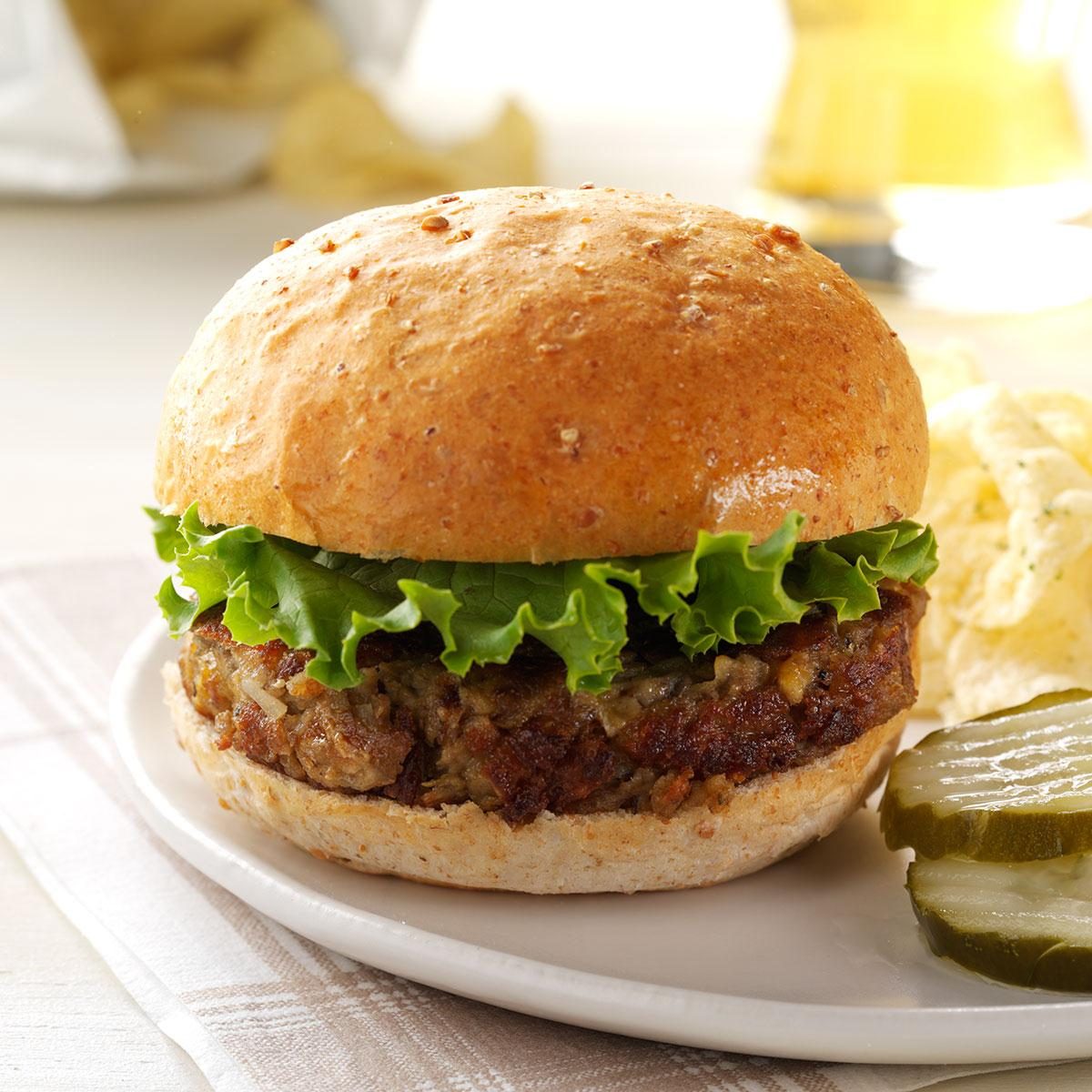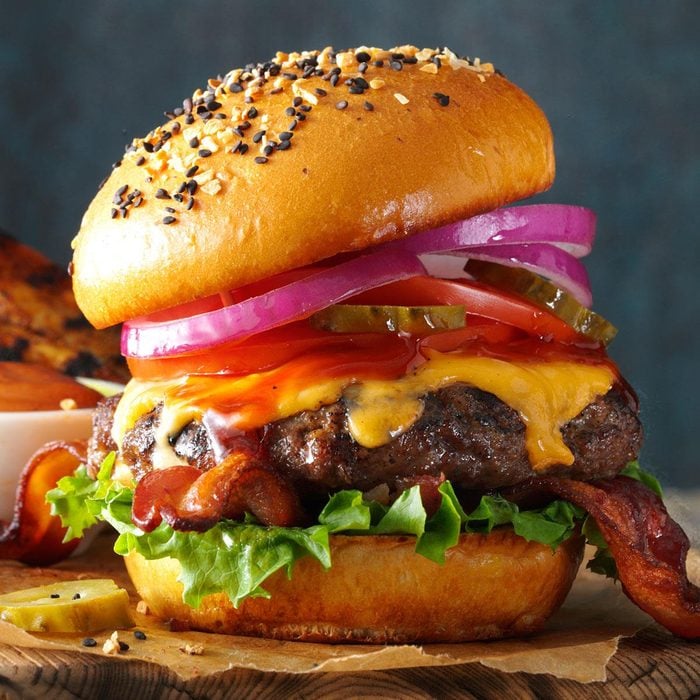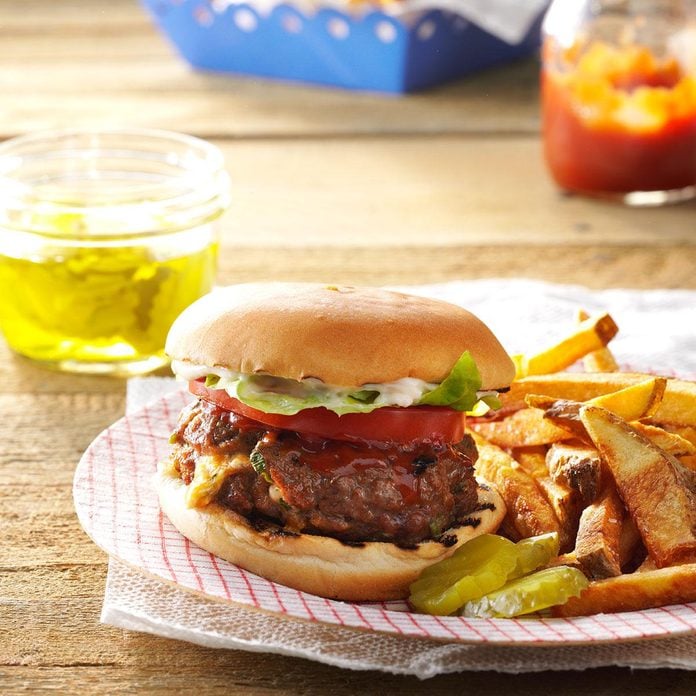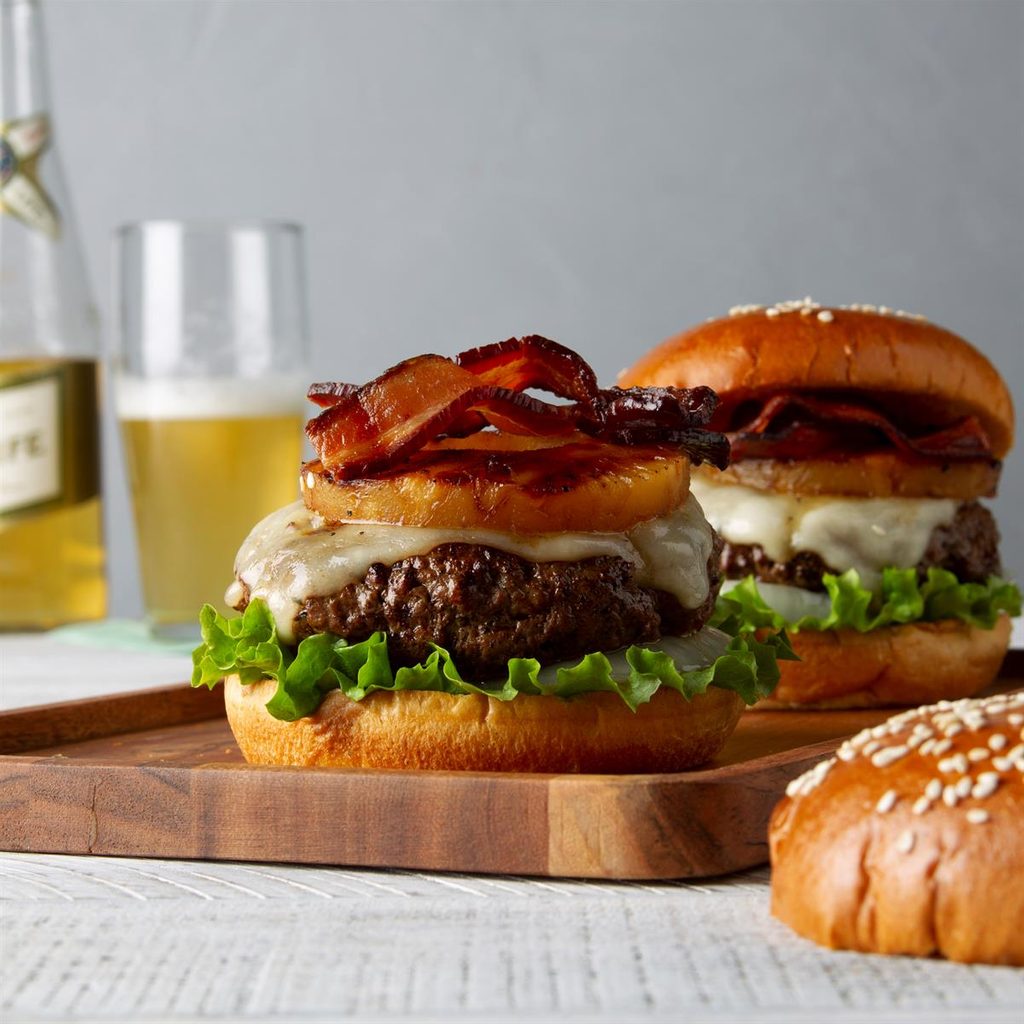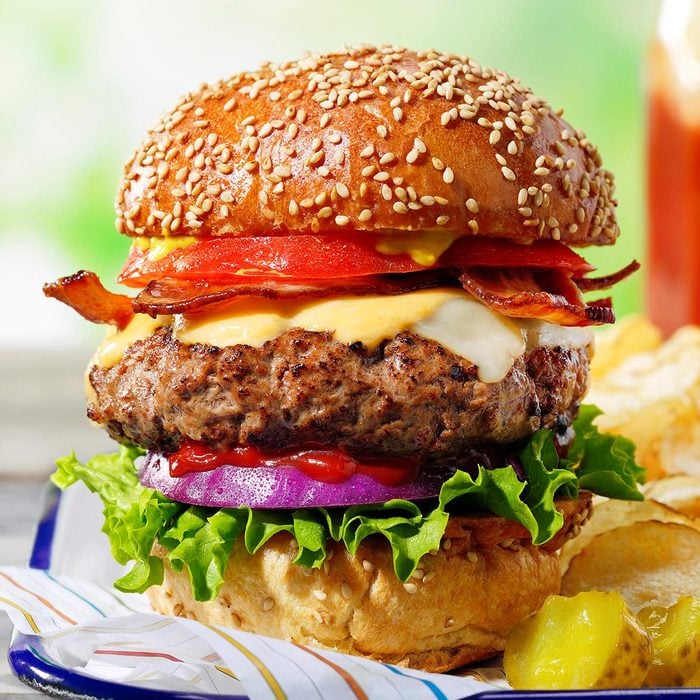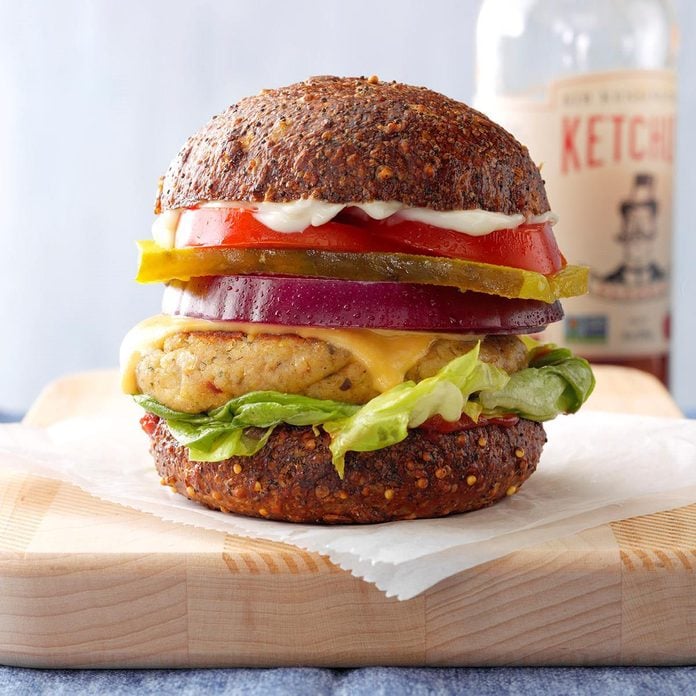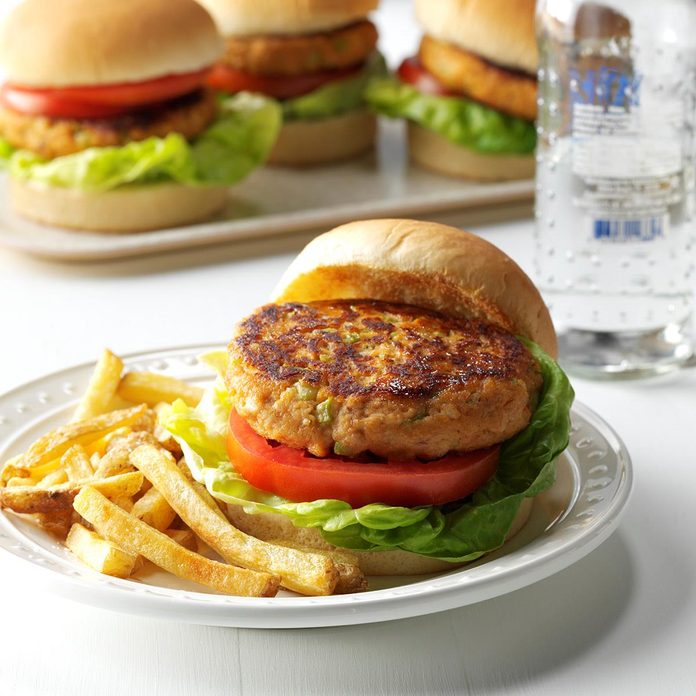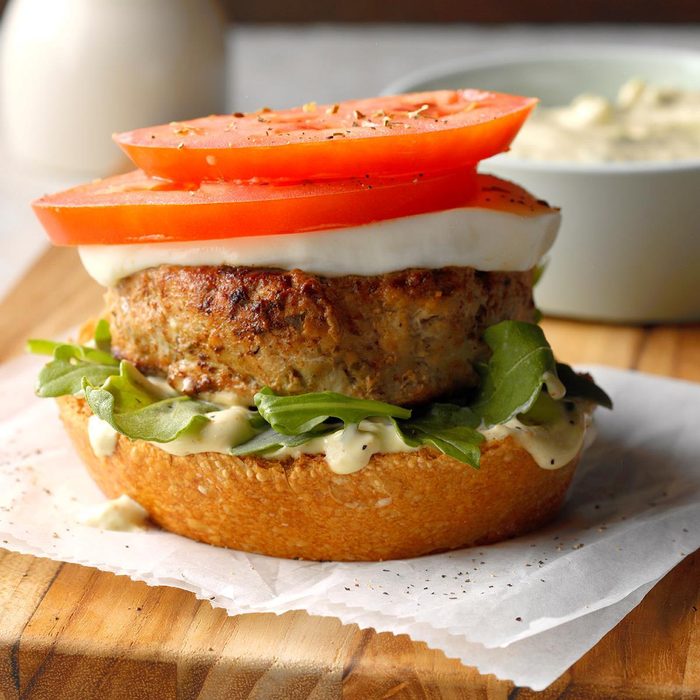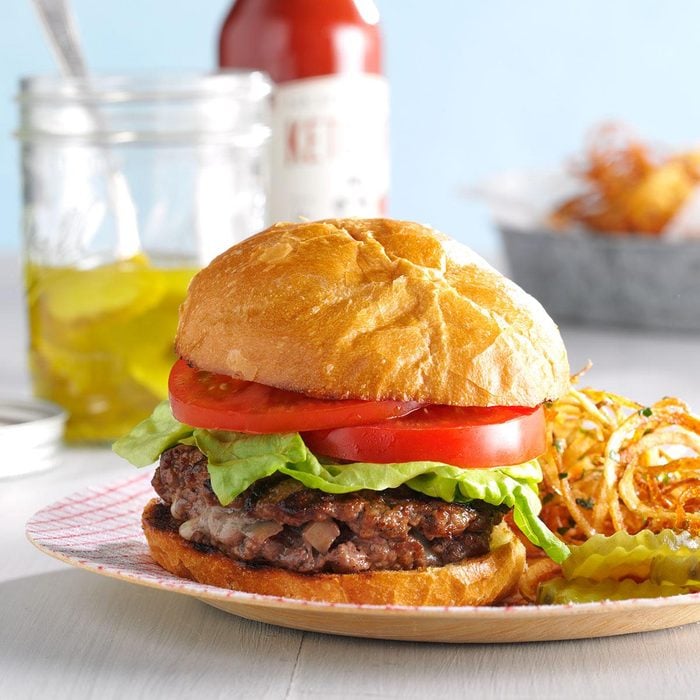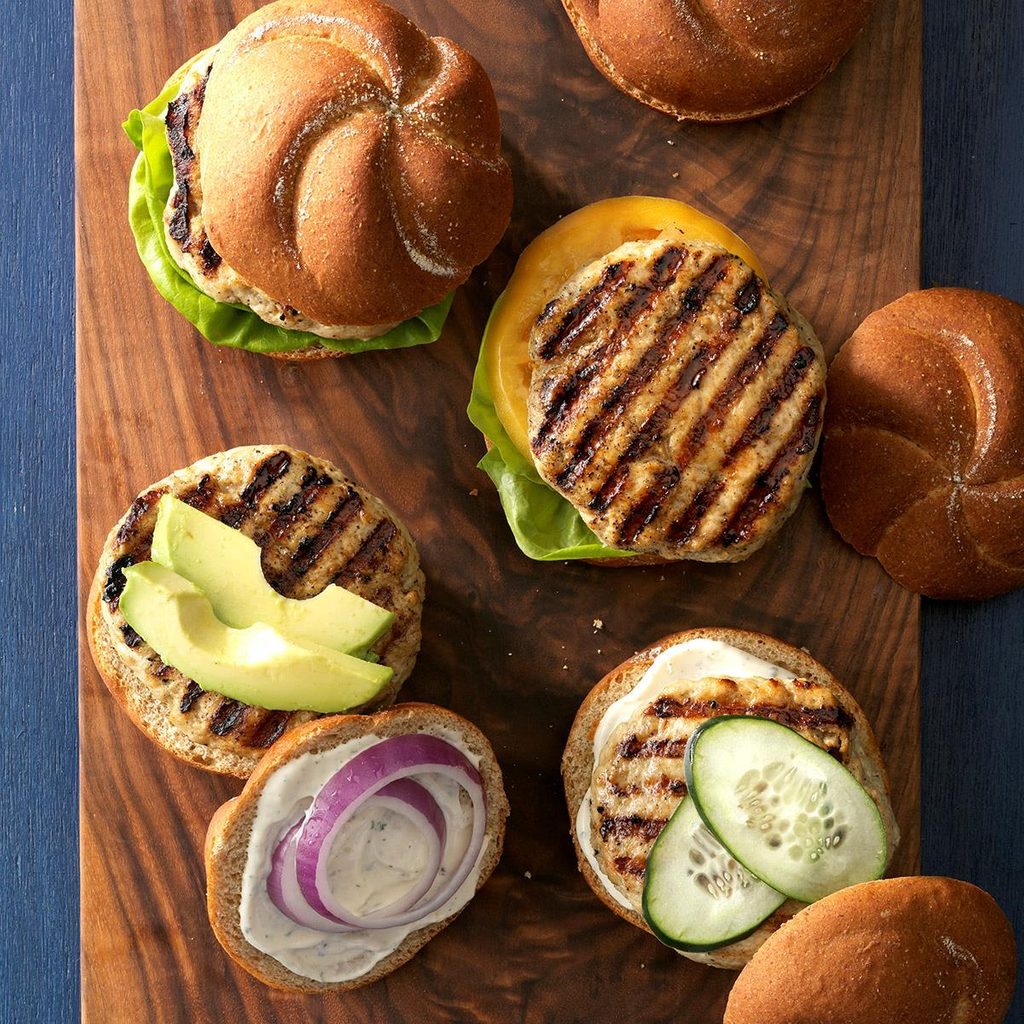What’s the Secret to Perfect Burgers at Home? A Former Restaurant Chef Shares 11 Expert Burger Grilling Tips
Updated: Feb. 25, 2022
Super juicy burgers are possible at home! A former chef shares secrets to shaping, grilling and topping burgers for the best-ever cookout.
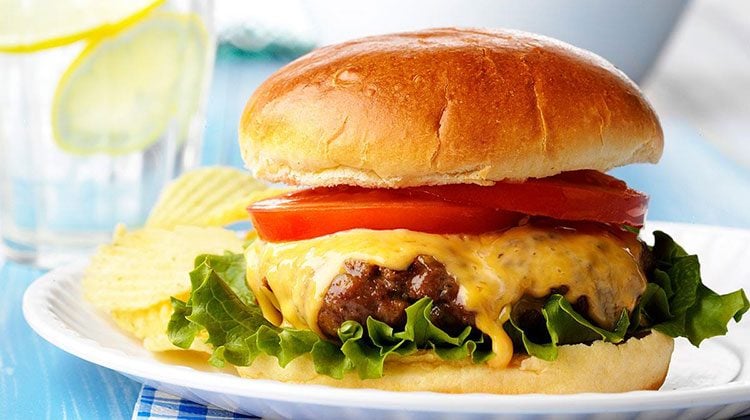
A good burger might just be the perfect food. While the ingredients are simple, they work together so well: the super juicy patty, served on a squishy bun, with gooey melted cheese and maybe a crisp pickle or two. (Psst…find out the surprising results of our pickle taste test before you buy another jar.) Unless you’re making your own buns, the burger patty is probably the hardest part to pull off. It’s all too easy to scorch the outside and leave the middle raw, whip up a too-greasy burger, or wind up with lackluster, dry meat.
As a former restaurant chef, I’m here to let you in on the industry’s top secrets for making the perfect burger, all easy enough to replicate at home.
Secret #1: Choose Your Beef Wisely
First of all, fat is flavor. A lean burger might sound good in theory, but it’s the fat that makes this sandwich juicy and delicious. Without fat, you end up with a mealy, dry burger. An 80 percent fat/20 percent lean mix is juicy, cooks up nicely, and is just indulgent enough without creating a greasy experience.
Now let’s talk grain- vs. grass-fed. While it’s widely debated which makes the better burger, I stand firm that grass-fed flavor can’t be beaten. If you’re not a fan, make sure you spring for a quality grain-fed beef. Whatever your preference, opt for quality. You simply can’t make a good burger with bad beef.
Secret #2: Grind Your Own
Commercial ground beef consists of leftover trimmings from steaks and roasts. Unless you have a great neighborhood butcher who does everything in-house, it’s hard to know exactly what goes into your blend. By grinding your own, you get the freshest quality beef and get to control everything about your burger.
Some butchers will grind to order, or you can grind at home with a KitchenAid attachment or a food processor. Dice your meat, add your seasonings (except salt-we’ll get to that later), and chuck it in the freezer for 30 minutes to an hour. When it’s firmed up a bit, toss it into your processor and pulse, pulse, pulse until you have a uniform mixture. Equal parts sirloin and chuck steak make a nice combination of fat and finesse. If you’re feeling fancy, add brisket or short ribs to the mix.
Secret #3: Keep It Cold
Throughout the whole process, keep everything as cold as possible. Use cold, wet hands when making the patties, and let the meat rest in the fridge until you’re ready to hit the grill. We want the fat in the patties to be super chilled so it rapidly expands when exposed to heat, creating flavor pockets inside the patty. This leads to a burger with a nice sear and maximum juicy flavor.
Secret #4: Salt It at the End
We’re breaking all the rules here! Normally this is the last thing I would ever tell you to do. I usually recommend salting in the beginning to build layers of flavor. That doesn’t really work with burgers, though. It’s salt’s nature to draw out moisture from proteins, which works well for steaks but it leads to dense, dry patties with ground beef.
The solution: Salt the outside of the burger right before it hits the grill. You won’t miss any seasoned flavor in this burger, and you’ll be left with a delicious, salty crust.
Secret #5: Perfectly Shaped Patties
Ever wonder how restaurants make perfect burger patties? Most of them use a lid (like from the top of a yogurt, sour cream or other container) to mold the burgers. In addition to making uniformly sized patties, this method also makes it hard to overwork or overheat the mixture.
Almost any lid will do. A large peanut butter jar lid lined with plastic wrap makes perfect patties at home. (Just don’t plan to put the lid back on the peanut butter when you’re done!)
Secret #6: The Doughnut Hole vs. the Dimple
You may have heard about this trick: Create a hole or just poke a dimple in the center of the patty, and the burger cooks more evenly and keeps the center from bulging up. Here’s when to use each method:
If you’re cooking outside on the grill, just press a shallow dimple into the middle of your patty. The air circulates through the grill grates and around the burger, making a hole unnecessary.
If you’re grilling inside on a cast-iron pan or griddle, make a complete hole in the center of the patty. It promotes airflow through the inside of the burger, cooking the inside and outside at an even rate.
(Psst…did you know you could grill cake? Find our most surprising grilling recipes here.)
Secret #7: Use Indirect Heat
I always make my burger patties thick–1 inch–because I like plump and juicy burgers. Unfortunately, thicker patties take longer to cook. After searing each side of the burger on the hot part of the grill, move it to the cooler, indirect-heat side. This gives you a nice crusty exterior (especially if you followed the salt secret) and gives the burger time to cook through on the inside.
Secret #8: Pick a Melty Cheese
Processed cheese isn’t my favorite….unless it’s melted atop a burger. American cheese is classic. It’s gooey. It’s so good.
What you’re looking for is a cheese that becomes one with the patty when it melts. Cheddar, Monterey Jack and Swiss are all sure bets. (Love cheese? Try making a retro fondue for your next party.)
Secret #9: Use a Thermometer
There’s nothing worse than pulling a perfectly grilled burger onto your bun-only to find out that it’s raw in the middle! A thermometer is one of our essential kitchen tools for good reason, so let’s put it to use.
The USDA’s recommended cooking temperature for ground beef is 160 degrees (well-done). If you grind your own or buy meat from a source you trust, you can cook it to 130 degrees for medium-rare (deep pink center), 140 for medium (warm, pink center), or 150 for medium-well (hot, grayish-pink center). Bookmark this handy temperature guide.
Secret #10: It’s All About Those Squishy Buns
It’s impossible to enjoy a perfect patty without a pillowy, soft, squishy bun. The potato bun is classic. A brioche bun is rich. Pretzel buns add salty goodness.
Whatever you do, don’t choose any bread or bun that’s hard. (This is not the place for your crusty homemade loaf!) Hard bread makes the patty slide right out, creating what I call the Dreaded Sandwich Slide (whose only purpose in life is to ruin your outfit, and probably your day, too).
To prevent the bun from getting soggy, give it a light toast (you can toss them on the grill briefly to do this), and/or add a layer of mayonnaise.
Secret #11: Carefully Consider Your Toppings
What’s so amazing about a a classic burger? Everything melds together so you get every flavor in each bite. Juicy meat, melty cheese, a chewy bun, a tangy pickle…bliss. If you pile on too many toppings, they compete with each other-and with the beef. (You did go through the effort to make the best-ever burger patty. You should enjoy it!)
Our favorite formula for a good burger? Add one topping from each of these categories: savory and rich (fried egg, bacon, cheese); creamy and cool (avocado, mayo or aioli); crispy and fresh (lettuce, tomato, thinly sliced onion); and sharp (dill pickle, pickled onions). That’ll create the perfect balanced bite.
Now that you know how to grill the perfect patty, check out our step-by-step guide with instructions for making burgers on the stove or in the oven, plus recipes for our favorite homemade burger sauces.

